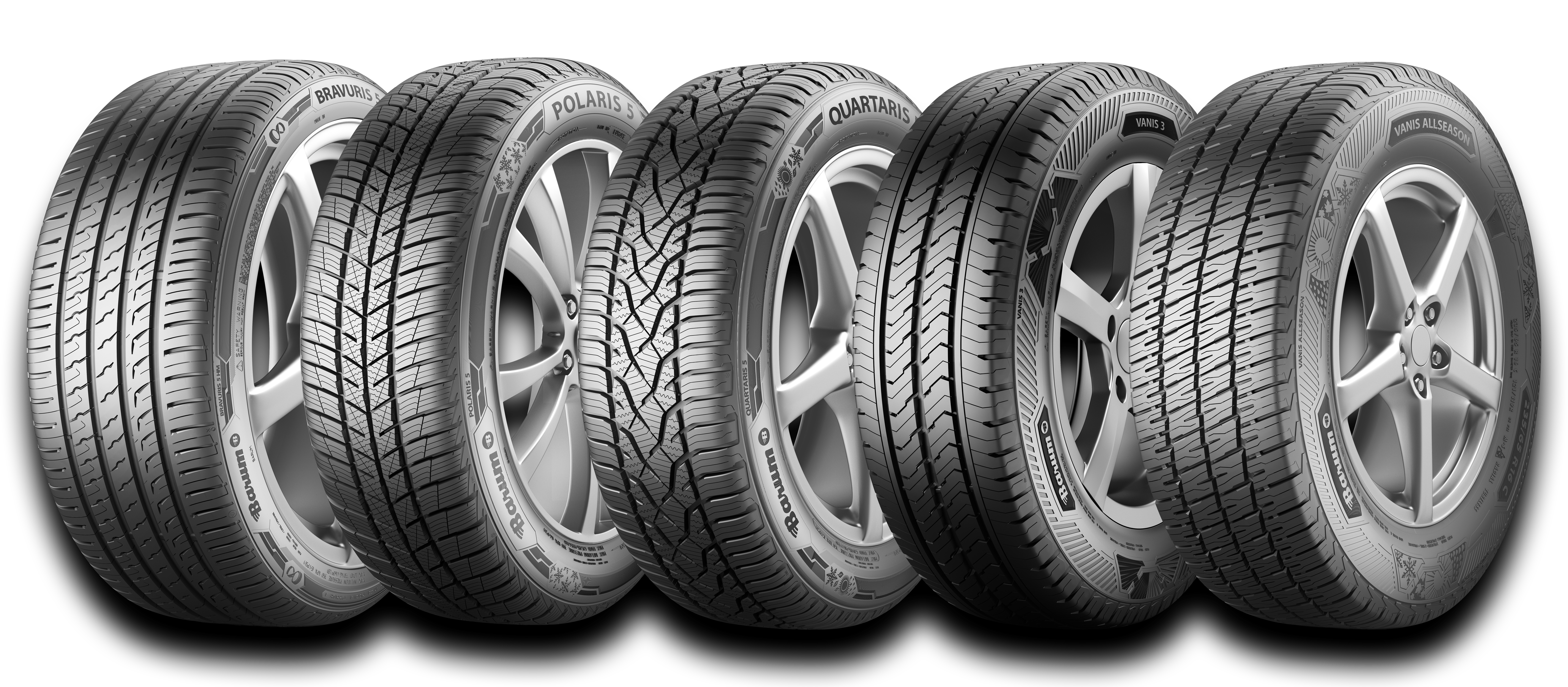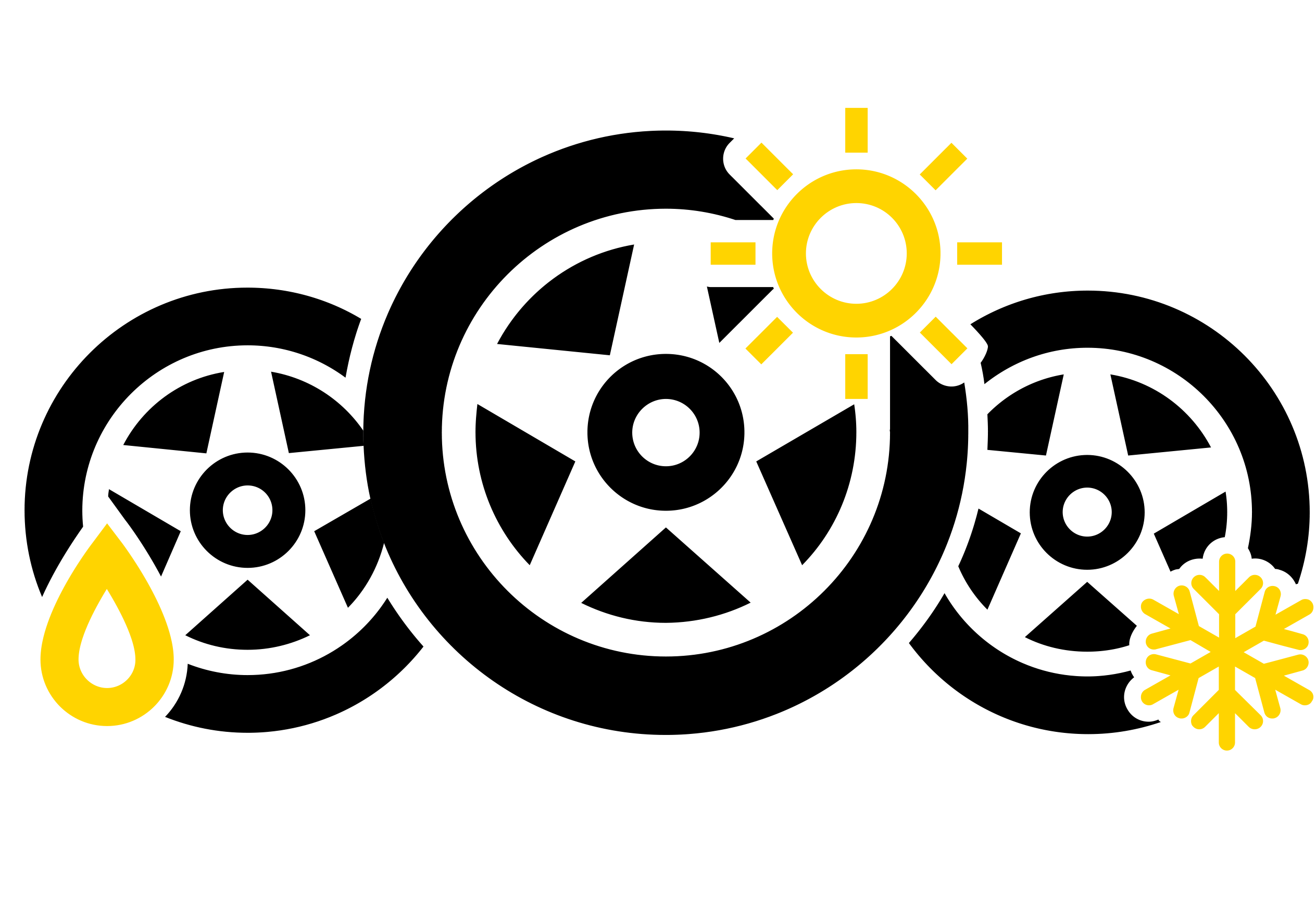
When you’re interested in getting the most out of a new set of tyres, you’re most likely to start researching the advantages of all tyres. And you’ll find an abundance of confusing information. We’re here to help you get an overview with our list of different types of tyres.

Differences in construction: What are tyres made of?
Tyres can be divided into two superimposed categories: tubed and tubeless tyres. Essentially, there is only one type of tubeless tyre for private use and all other tyre types fall in the tubed category.
Tubeless performance tyres: Run-flat
There’s one main advantage of run-flat tyres to name upfront: You can keep on driving, even with a puncture. That’s not to say that you can use them forever. They will still lose pressure over a certain distance after being punctured. In this case they should only run for 50 miles (about 80 kilometres) at a maximum speed of 50 mph (about 80 kmh).
But then how do you realize that you’re losing pressure? Run-flat tyres are only permitted when your car has a tyre pressure monitoring system (TPMS). This system will let you know when the pressure is decreasing. Run-flat tyres are available as two constructional variants: a self-supporting construction and one with a supportive ring. Their differences are:
- Self-supporting: Reinforced sidewalls to support the weight of your car, even when the tyre has been punctured.
- Supporting ring: An additional ring made of rubber or something similar is within the tyre to support your car.
As most modern cars are equipped with a TPMS, run-flat tyres are becoming more and more popular. If you’re considering run-flats, this are the advantages of these tyres:
- Robust and good tyres that can run a certain distance even without air.
- No need for a tyre change somewhere on the road in the case of a puncture.
- Hardness of tyre offers better driving dynamics.
Radial tyre:
This is the most common tubed tyre you’ll find on the market. And for good reason: The tyre sidewall and tread are independent from each other thanks to radial ply cords, allowing high flexibility while still maintaining vehicle stability. In turn, this helps absorb impact and increases general comfort. The tyre itself also has a lower fuel consumption than other types. This is due to less rolling resistance. Most likely, when you’re considering buying a new set of tyres, you’ll select a variant of this tyre.
Radial tyre types: Seasonal tyres
Here are some types of tyres you’ve likely heard about: seasonal tyres like winter tyres, summer tyres, and all-season tyres. What type of tyre you decide on here depends on your weather situation and local laws.
Performance of winter tyres

What are the main advantages of winter tyres? Winter tyres are generally softer than the other radial tyres. This enables them to get a better grip on snowy and icy surfaces. Some might call them snow tyres, but that’s just another name for them. Their higher content of rubber makes them more flexible, but also unsuited for temperatures above +7 °C. When it gets warmer, their rolling resistance increases, and they become too soft for sharp cornering. Winter tyres in summer also show a longer braking distance.
But why use winter tyres in general? Anyone who drives in deeper snow or in icy conditions is thankful for their excellent grip on cold roads.
Summer tyre performance

Summer tyres are optimised for wet and dry conditions. Thanks to their harder compound, they have excellent cornering abilities. While their tread grooves are often not as deep and fewer than those of winter tyres, they’re specialised on reducing the chance of aquaplaning. Also, they have a larger tyre footprint – contributing to their handling and reduced braking distance in dry and wet conditions.
Due to how summer tyres are made, they make for excellent performance tyres.
Advantages of all-season tyres

The greatest advantage of all-season tyres is their versatility. They work well in both, warm and cold weather. However, they are not meant for extremes like performance tyres or winter tyres. All-season tyres are a cheaper alternative to having two sets of seasonal tyres. They save you the cost of seasonal changes, storage cost and save time as well. Particularly in moderate climates.
By combining the best of winter and summer tyres, all-season tyres can save you the change twice a year. They also harden at a lower temperature than summer tyres, making them ideal for colder – but not too cold – weather. They also corner better than winter tyres, coming close to the performance of summer tyres.
On the other hand, all-season tyres sacrifice the best performance winter tyres and summer tyres offer in their weather condition. Should all-season tyres be an option, it all comes down to where you usually drive and which weather conditions you face there. Keep in mind though: All-season tyres cost more than a set of seasonal tyres and need to be replaced at higher frequency. They generally have a lower mileage and by using them year-round, they wear faster.
Advantages of other tyres
Beside the classical seasonal tyres and all-season tyres, there are also specialised tyres. These types of tyres are specifically meant for certain conditions or even vehicles:
- Van tyres:
Van tyres are meant for professional use. They are available as all-season, summer and winter tyres, but on top of that, they can carry heavier vehicles and loads. - All-terrain tyres:
Not to be confused with off-road tyres, all-terrain tyres are more all-purpose. All-terrain tyres are a combination of off-road tyres and street tyres. These tyres should be chosen if you’re traveling on- and off-road in equal measure. - Mud tyres:
This tyre is more in the off-road category. They are easily recognizable by their large tread blocks that enable them to travel across rocks, through mud and even sand. - Touring tyres:
These tyres can’t be driven at high speeds, as their benefits lies with their slow wear and pleasant ride. Touring tyres are often chosen by long distance drivers for their comfort. More often than not, these tyres are all-season tyres. - Low profile tyres:
Tyres have a certain height that is measured from the rim to the outer edge of the tyre. Low profile tyres have a very small height. They’re common in sports cars, but also among car owners who enjoy the sportier look. These tyres allow dynamic driving but sacrifice comfort in turn.
Our Expert‘s Advice:

Most tyres aren’t low profile tyres – this type of tyre is often a very conscious choice made by the car owner. To determine the size of your own tyre, take a look at its sidewall. You will find a number and letter code, like so: 195/55 R16 87V.
Learn what exactly the numbers and letters mean in our article ‘Which tyre size fits my car?’.
Advantages of tyres at a glance
- Run-flat tyres: can still be used for a certain distance even after a puncture, robust and provide good driving dynamics
- Radial tyres: most common tyre construction type, flexible and comfortable, ply cords are radial to the tyre
- Winter tyres: soft seasonal tyres that stay soft even below 7 °C, the advantages of winter tyres are felt in deep snow and on ice, often mandatory in EU countries
- All-season tyres: alternative to summer and winter tyres, and are good tyres for light snow, dry and wet conditions
- Summer tyres: excellent performance tyres in dry and wet, protect well against aquaplaning, good at cornering manoeuvres
- Van tyres: tyres for professional, camper van and family van use, capable of carrying heavy loads
- All-terrain tyres: hybrid between street and off-road tyres, meant for both
- Mud tyres: true off-road tyres, work on rocks, in mud and even on sand
- Touring tyres: tyres for long, but comfortable travelling distances, not made to be driven at high speeds
- Low profile tyres: sporty tyres with a low height-to-width ratio, making the rims look larger

